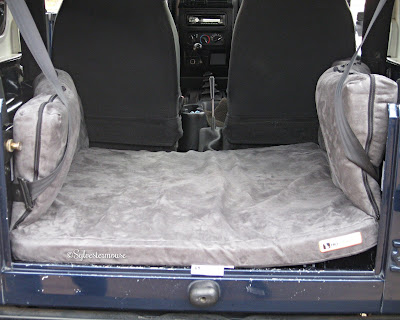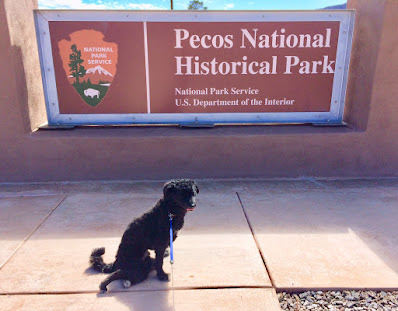 |
| Fenway Bolted Due to Frightening Gunshots |
Count off two seconds with me. One, one thousand. Two, one thousand. Stop. Someone has just lost a beloved pet. Again: One, one thousand. Two, one thousand. Another fur baby is missing.
This happens every day, every two seconds. If you add it up, that is 30 missing pets per minute, 1800 per hour, and 43,200 per day. I did the math. That comes out to over 15 million missing pets each year. For anyone who cannot imagine a life without animals, that is a horrifying number.
I hate to tell you this, but it gets worse. Only 1 in 10 of those lost animals will return home.
 |
| Blessing Escaped From a Vehicle - She Has Not Been Found |
Though one might be able to set aside cold, hard numbers, it is much more difficult to forget the names and faces of the missing. Likewise, the desolation of not knowing the fate of a pet is the kind of thing that haunts a pet parent forever.
Given these statistics, it seems clear that more needs to be done to significantly reduce the number of animals that go missing, and more needs to happen to successfully reunite the lost with their loved ones. It is no coincidence that July is National Lost Pet Prevention Month. Over the 4th of July holiday, animal intakes in shelters across the nation increase by 80 percent. No doubt, much of that has to do with the terrifying nature of fireworks, and how extreme distress causes so many animals to bolt in sheer panic.
Why do pets become lost? What happens to missing pets? Why are some found, while others seemingly disappear into thin air? What makes the difference in giving these lost animals a better chance of being reunited with their families?
Pets become lost for any number of reasons. They can bolt when scared or when involved in an accident (
like Jade in Yellowstone National Park), escape when given the opportunity (an open gate or door), go looking for love (if not spayed or neutered), take off during a hike in the woods (in pursuit of a wild animal), become disoriented, or upset, after a move to a new home (and go looking for the familiarity of a former life), jump out of a vehicle, dig under a fence, get snatched while unattended, and so much more.
 |
Harley Went Missing During a Move
She Was Found Eight Miles From Her New Home |
What happens to your missing pet? Many different scenarios can unfold depending on the animal's physical condition and age, her confidence and personality, familiarity with the territory, weather conditions, proximity to helpers (remote area vs. urban area), and actions taken by those responsible for finding her.
Some animals are found, but have no identification tag or microchip. The finder doesn't know who to contact to return the pet. That dog or cat may end up being kept by the finder, or adopted out by an animal rescue organization. This is one reason why it is so important to notify regional shelters and online lost pet forums. Highly visible, and widely distributed, lost pet signs are also critical in these cases. Harley was reunited with her family last week because the finder saw her posted in a lost pet group on Facebook.
A dog missing for three weeks was found just yesterday thanks to a lost dog sign that was seen by an individual who sighted a dog dragging a leash. Despite being lost in a major city, Coco had evaded searchers for 21 days, and was found hiding in a field one mile from where she bolted. She ran in fear from an outside seating area at a coffee shop due to an unexpectedly loud crashing noise. Her leash had been wrapped around the leg of a chair while her owner was picking up an order. Just like that Coco was gone. Never leave your dog unattended.
 |
| Coco is a Real Flight Risk |
Pets riding in cars should always be restrained. This can be done with a travel crate,
a harness system that hooks into a seatbelt, or similar safety features. Blessing escaped from a vehicle because she was not adequately secured. Always, always secure your pet in a vehicle. Some dogs are able to lower car windows by standing on the power window buttons (Blessing was one of those dogs). That provides a vehicle escape route. Be sure to activate the child safety locks in your car when traveling with pets.
Our organization
microchips every animal adopted from our shelter. It is not unusual for a pet to get away from a new owner. Keeping your pet's chip registered and updated with current contact information is essential.
If you take your dog hiking or camping in remote areas, you might consider outfitting him with a
GPS tracker collar. Out in the wilderness, this could save his life. It is also a good idea if you have a dog that has gotten away from you before, or that tends to be easily frightened. A skittish dog on the run can be harder to find given the tendency toward evasion.
Some final tips: Be aware of your pet's body language. Pay attention to the behavioral, and environmental, cues that may alert you to a potential escape. Have a plan in place for how you will respond should one of your pets go missing.
Read up on the essentials of how to find a missing animal. Even if your pet is primarily an indoor animal, always ensure that she is wearing a collar and identification tag.
It is said an ounce of prevention is worth a pound of cure. Given the estimate that 1 in 3 pets will go missing over their lifetimes, now is the time to ensure your precious companion will not become one of those sad statistics.
It takes all of us together to ensure the safety of the beloved animals that count on us and that enrich our lives beyond measure. Please consider supporting our new
Lost Pet Search and Rescue Initiative. Given the epidemic of lost pets, this collective effort to save lives has taken on a greater sense of urgency. Thank you for joining forces with us.
Note: The author may receive a commission from purchases made using links found in this article. “As an Amazon Associate, Ebay (EPN), Esty (Awin), and/or Zazzle Affiliate, I (we) earn from qualifying purchases.”



































































